Research project
Time and memory
A study concerning the collective memory in the region of the Bene lo Ya/ Ene lo I'ya, Sierra Norte, Oaxaca.
Short Abstract
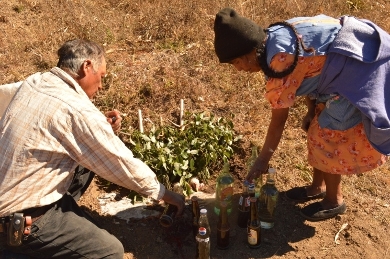
The research focuses on the work of ritual experts speaking the dilla Xhon and tíza Le’ya (generally referred to as the Zapotec language) in the Lo Ya’a / Lo I’ya region in the Sierra Norte of the Mexican state of Oaxaca.
In the Archivo General de Indias, in Sevilla, an important corpus of calendars and texts is preserved, written during the 17th Century by Zapotec ritual experts from the Sierra Norte del Estado de Oaxaca, México. These documents were confiscated in a violent context during the first years of the 18th century. The research aims to contextualize these sources within the present-day work and knowledge of rituals experts (women and men) from the Sierra Norte. It documents through a hermeneutical approach the role that these ritual experts play today in communities from the Xhon as well as the Le’ya linguistic areas and aims to understand the fundamental values that are transmitted by them. Each expert is considered a key actor in the interaction between the sacred, the cosmos and the human community. The question of time occupies a central role in this project as it is present in the construction of memory, in narratives and places ( lieux de mémoire), in rituals and in divination. An important outcome is a collective text written together with Zapotec experts involved in bilingual community education. Its aim is to reinterpret together some elements of the sources of the 17th century and thus to show and reaffirm the importance of studying and reflecting together with native speakers and particularly with agents of community education for a better interpretation and appreciation of their cultural heritage and for developing adequate school curricula.
Research question
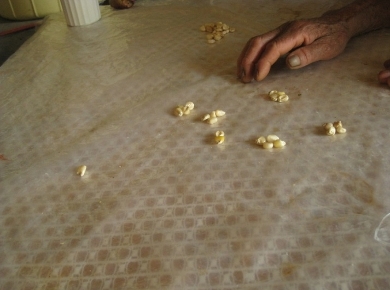
What are the functions of ritual experts today in communities from the Xhon as well as the Le’ya linguistic areas and what are the fundamental values that are transmitted by them?
Social relevance
Ritual experts, both women and men, have a crucial role in their community as key transmitters of intangible heritage for future generations. Since colonization until today, as being members of indigenous communities, their knowledge suffers a strong discrimination. They act as midwives, healers, life advisers and protectors for every child that begins his life within the community. They carry the memory of their ancestors and apply it in a societal context which presents strong threats against their knowledge. The research focuses on their work in Lo Ya’a/ Lo I’ya region, more specifically in the dilla Xhon and tíza Le’ya, linguistic regions of Zapotec people from the Sierra Norte.
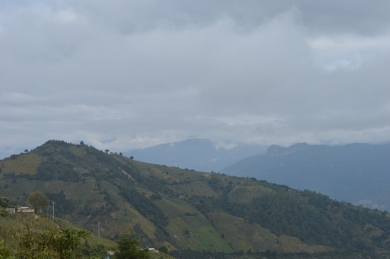
Integrated into this project is the production of a collective text written with Zapotec representatives of the bilingual community education from the Sierra Norte. It is the objective to reaffirm the importance of collaborative reflections with teachers within the community as well as the necessity of working together with native speakers for the interpretation of key data of their own heritage, which are written in different Zapotec variants that they all speak as their mother tongue.
The project

The project documents through a hermeneutic approach the role of today's ritual experts in the communities of Bene Xhon and En’ne Le’ya as well as the fundamental values that are transmitted by them. Each expert is considered as a key actor for the interaction between the sacred, the cosmos and the human being. The question of time follows the whole project through memory, narratives, prayers, sacred landscape (considered as lieux de mémoire), and the materialization of time in rituals.
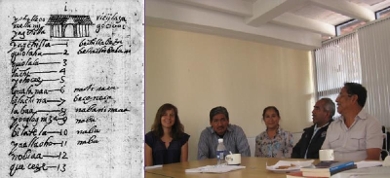
The research also compares the knowledge of today's ritual experts with different texts and Zapotec calendars written by hand of ritual experts from the Sierra Norte during the 17 th century. Understanding these documents is part of a collective reflection together with representatives of the bilingual community education sector from the Sierra Norte.
Why Leiden University?
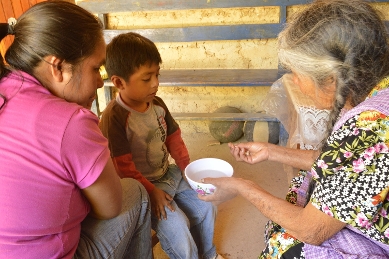
Leiden University has created an intercultural dynamics, and thanks to the (ERC-funded) project “Time in Intercultural Context” this PhD project can develop and enrich its own research through continuous exchange with international and indigenous experts from Mexico.
Material & Methods
This PhD research project focuses on tangible and intangible heritage of the indigenous communities in the Sierra Norte of Oaxaca. It combines ethnographic fieldwork with direct collaboration with indigenous experts, and cultural-historical interest with decolonizing and educative purposes.
